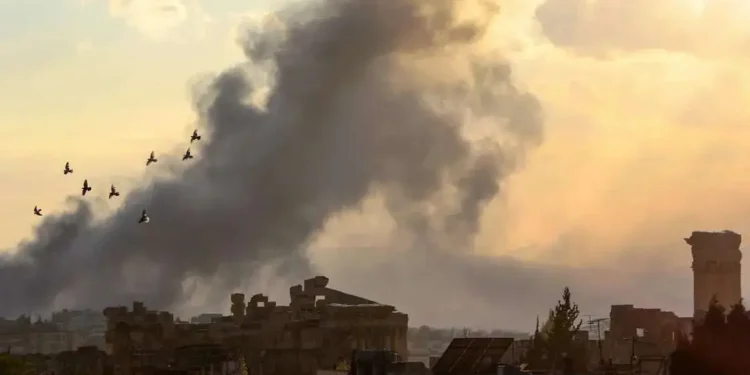As escalating conflict places Lebanon’s ancient heritage sites at risk, UN Special Coordinator for Lebanon, Jeanine Hennis-Plasschaert, has raised alarms about the impacts of Israeli airstrikes on the historical cities of Baalbek and Tyre. These UNESCO World Heritage Sites, renowned for their historical and cultural significance, now face grave threats, highlighting the urgent need to protect Lebanon’s irreplaceable heritage amidst the turmoil.
Lebanon’s Cultural Heritage Under Threat
Lebanon is home to some of the world’s oldest civilizations, with Baalbek and Tyre standing as testaments to ancient empires and Phoenician history. Baalbek, often celebrated for its expansive Roman ruins, traces its origins back over 11,000 years. Known for the Temple of Bacchus and the Temple of Jupiter, Baalbek has served as a hub for ancient cultures and continues to attract researchers and archaeologists worldwide. Similarly, Tyre—an ancient Phoenician port city—was once a thriving trade center in the Mediterranean, boasting over 4,000 years of continuous human settlement. Both cities are vital parts of the UNESCO World Heritage list, recognized for their unique contributions to global history.
UN’s Urgent Plea to Preserve Lebanon’s Heritage
Hennis-Plasschaert’s recent statements underscore the cultural loss at stake if these sites are destroyed. “Ancient Phoenician cities steeped in history are in deep peril of being left in ruins,” she wrote on social media, emphasizing that Lebanon’s heritage “must not become yet another casualty in this devastating conflict.” The attacks have also triggered mass evacuations, forcing tens of thousands of residents to flee Baalbek and Tyre, further worsening the region’s humanitarian crisis.
In a social media post, the UN envoy described the situation as catastrophic, urging the international community to take immediate measures to prevent irreversible damage to Lebanon’s cultural legacy. The preservation of these historic sites, she asserted, is crucial not only to Lebanese heritage but to the broader understanding of ancient civilizations.
Historical Significance of Baalbek and Tyre
The ancient city of Baalbek, known for its Roman architecture and the largest stone blocks used in any building across the world, has held immense importance throughout history. The structures found here, especially the grand temples, offer unique insights into ancient religious practices and architectural achievements. The city’s prominence dates back to Roman rule, where it was revered as a site of worship and pilgrimage.
Tyre, meanwhile, has a storied past as a central Phoenician trading port from the 9th to the 6th centuries BCE. Its contributions to maritime trade across the Mediterranean solidified its place as a cultural and economic powerhouse under several empires. The city’s historical relics, including the Al-Bass Archaeological Site, remain a focal point for understanding the intricate trade routes and cultural exchanges of ancient civilizations.
Cultural Heritage and the Ongoing Conflict
The UN’s call for safeguarding Lebanon’s cultural assets reflects the broader challenge of preserving heritage sites in conflict zones. As warfare continues to threaten significant historical sites globally, the protection of Baalbek and Tyre underscores the importance of cultural preservation in international diplomacy. Lebanon’s Phoenician cities are symbols of resilience and history; their loss would represent an irreplaceable void in the story of human civilization.
The situation has brought global attention to the intersection of conflict and cultural heritage, with experts advocating for policies that ensure heritage sites receive protection even amidst war. The appeal from the UN’s special coordinator calls upon countries to uphold international agreements aimed at safeguarding cultural heritage during armed conflicts.
A Call to Action: Global Responsibility to Protect Heritage
As the situation unfolds, the international community faces an opportunity to uphold the significance of cultural preservation. The UN envoy’s message resonates deeply with those who value historical legacy and cultural identity. Ensuring the safety of Baalbek and Tyre is not just a responsibility to Lebanon but to future generations who seek to understand the world’s ancient civilizations.
With increasing awareness, global leaders, organizations, and individuals must work collectively to protect Lebanon’s rich heritage, recognizing that each site preserved today keeps a piece of history alive for tomorrow.
Related posts:
Lebanon aid conference in Paris raised $800M: French foreign minister
















